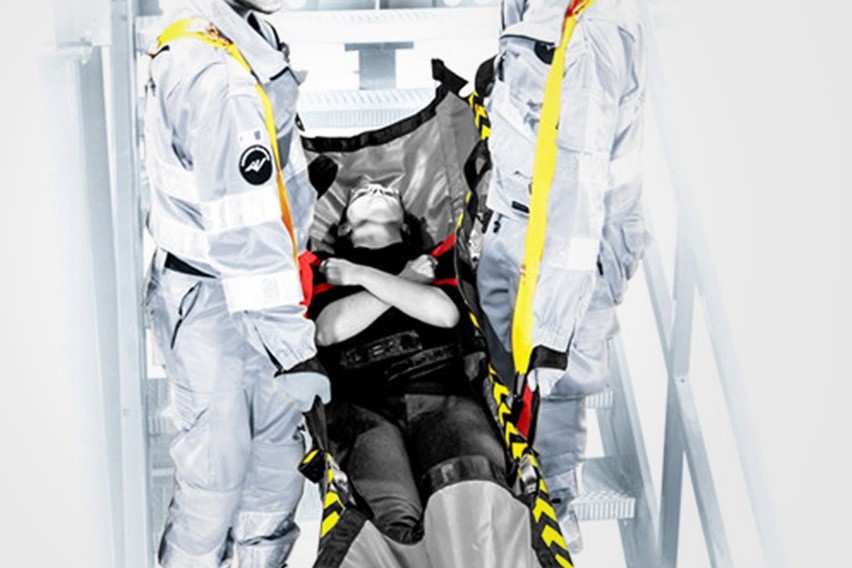
Emergency equipment: the emergency carry sheet / VIDEO TUTORIAL
The carry sheet is one of the most familiar aids to the rescuer: it is in fact a tool used in emergencies to load patients, unable to move independently, onto the stretcher or to transfer the injured from the stretcher to the bed
What is a carry sheet?
It is a strong, rectangular-shaped plastic drape about 2 metres long which is used to transport the patient for short distances and in the absence of those pathologies which require the use of rigid aids (limb, thoracic or vertebrombital traumas) or for which transport in a seated position is necessarily required.
Six or eight handles are sewn into the lower part of the sheet, which are used for the rescuers to grip the sheet.
RESCUERS’ RADIO IN THE WORLD? VISIT THE EMS RADIO BOOTH AT EMERGENCY EXPO
Use of the carry sheet
The use of the carry sheet begins with the preparation of the patient, who must be placed on his or her side.
The drape should then be half rolled up and placed against the patient’s back, taking care that the handles remain under the drape and not between it and the patient.
Two rescuers now rotate the patient onto the opposite side by passing the patient over the rolled up part.
The sheet is then unrolled and the patient is placed in a supine position.
At this point, transport can begin using the handles.
The safest grip is by placing the hands inside the handles so that they embrace the rescuers wrists.
It is best if the wrists are free of watches and bracelets.
During transport, the usual rules are followed (patient’s head upstream and feet downstream).
Watch a video tutorial on the carry sheet (italian language – subtitle)
Read Also
Emergency Live Even More…Live: Download The New Free App Of Your Newspaper For IOS And Android
Emergency Transfer Sheet QMX 750 Spencer Italia, For Comfortable And Safe Transportation Of Patients
Cervical And Spinal Immobilization Techniques: An Overview
Spinal Immobilization: Treatment Or Injury?
10 Steps To Perform A Correct Spinal Immobilization Of A Trauma Patient
Spinal Column Injuries, The Value Of The Rock Pin / Rock Pin Max Spine Board
Spinal Immobilisation, One Of The Techniques The Rescuer Must Master
Electrical Injuries: How To Assess Them, What To Do
RICE Treatment For Soft Tissue Injuries
How To Carry Out Primary Survey Using The DRABC In First Aid
Heimlich Maneuver: Find Out What It Is And How To Do It
What Should Be In A Paediatric First Aid Kit
Poison Mushroom Poisoning: What To Do? How Does Poisoning Manifest Itself?
Hydrocarbon Poisoning: Symptoms, Diagnosis And Treatment
First Aid: What To Do After Swallowing Or Spilling Bleach On Your Skin
Signs And Symptoms Of Shock: How And When To Intervene
Wasp Sting And Anaphylactic Shock: What To Do Before The Ambulance Arrives?
UK / Emergency Room, Paediatric Intubation: The Procedure With A Child In Serious Condition
Endotracheal Intubation In Paediatric Patients: Devices For The Supraglottic Airways
Sedation And Analgesia: Drugs To Facilitate Intubation
Intubation: Risks, Anaesthesia, Resuscitation, Throat Pain
Spinal Shock: Causes, Symptoms, Risks, Diagnosis, Treatment, Prognosis, Death
Spinal Column Immobilisation Using A Spine Board: Objectives, Indications And Limitations Of Use
Spinal Immobilisation Of The Patient: When Should The Spine Board Be Put Aside?



